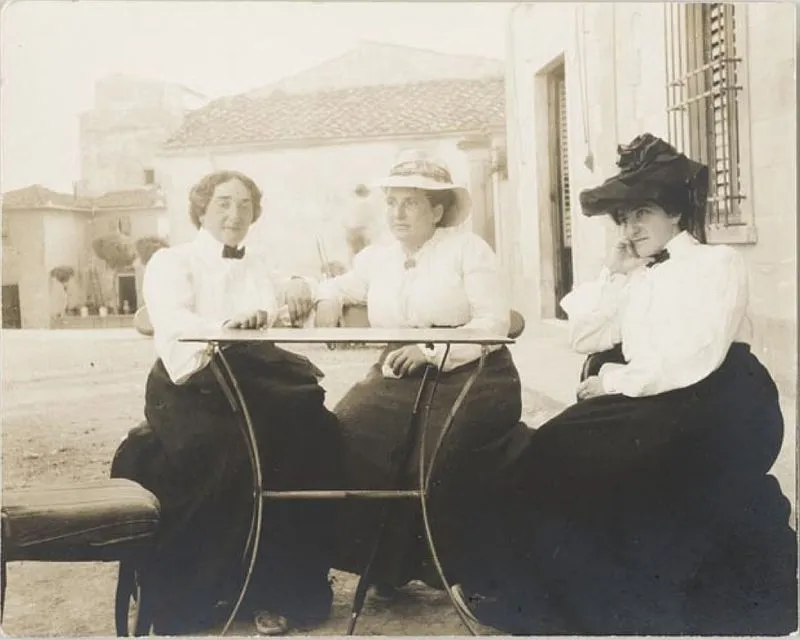Baltimore Museum of Art, Home to Largest Matisse Collection, Will Open Center Dedicated to Artist
The gallery’s Matisse holdings encompass more than 1,200 paintings, sculptures, drawings and prints
/https://tf-cmsv2-smithsonianmag-media.s3.amazonaws.com/filer/94/9f/949fa249-2136-4355-8039-5cec7202784a/matisse_souvenir_de_biskra.jpg)
When Claribel and Etta Cone first encountered Henri Matisse’s work, they—like much of the art establishment—were scandalized by his bold use of color and expressive brush strokes. Still, the sisters quickly warmed to the artist, who later dubbed the collectors and bon vivants his “two Baltimore ladies.” Over the course of the early 20th century, the pair, who were part of the city’s vibrant German Jewish community, acquired some 500 paintings, sculptures, drawings and prints by the modern art pioneer.
Upon Etta’s death in 1949, the Cone sisters bequeathed these holdings, as well as masterpieces by the likes of Picasso, Cézanne, Gauguin and van Gogh, to the Baltimore Museum of Art (BMA). Claribel, who had died in 1929, previously stipulated in her will that the gift would only be granted if “the spirit of appreciation of modern art in Baltimore becomes improved”—a directive readily fulfilled by the gallery, which now has the world’s preeminent Matisse collection.
As the BMA announced this week, a $5 million donation from the philanthropic Ruth Carol Fund is poised to further cement the museum’s ties with the Frenchman by establishing a 3,400-square-foot research center dedicated to Matisse. According to the Baltimore Sun’s Mary Carole McCauley, the space, scheduled to open in 2021, will occupy the building’s first floor and feature a rotating selection of small shows on the artist’s works on paper. A press release further notes that the center will serve as a “major resource” for art historians, providing opportunities for research and symposia, temporary exhibitions, and digitization and publicization of the Cone Collection.
Speaking with The New York Times’ Tess Thackara, the BMA’s director, Christopher Bedford, says the museum’s overarching goal is to “establish a brain trust within the institution.”
“What we’re really creating is something like a think tank focused on Matisse,” he says.
According to the press release, the study space will be called the Ruth R. Marder Center for Matisse Studies in honor of the local philanthropist who started the Ruth Carol Fund.

The BMA’s Matisse collection encompasses more than 1,200 works by the artist, making it the largest and most comprehensive of its kind found in a public museum. The trove consists of around 500 pieces donated by the Cone sisters and some 700 acquired since then. Notably, the artist’s daughter, Marguerite Duthuit, gave several works from her personal collection to the gallery, while the Pierre and Tana Matisse Foundation, launched by the artist’s son and his wife in 1995, donated a major selection of prints.
Today, the museum’s Matisse holdings include “Blue Nude,” a 1907 portrait that proved so controversial it was later burned in effigy, and “Large Reclining Nude,” a 1935 painting Etta was actively involved in creating. (As senior curator Katy Rothkopf told NPR’s Susan Stamberg in 2011, “While he was painting it, Matisse had it photographed and sent 22 photographs to Etta … in Baltimore. So she got to be involved in the process and see it in its different stages.”)
Claribel and Etta’s passion for the arts stemmed from a deep friendship with Gertrude and Leo Stein, who were studying at Johns Hopkins University during the late 1890s. The sisters supported their artistic interests with inherited income supplemented by funds from their older brothers, who ran a successful textile business. They regularly visited Europe, where they mingled with the likes of Matisse and Picasso, and eventually amassed a collection of around 3,000 works of art, most of which were displayed in their Baltimore apartments prior to being transferred to the museum.
Rothkopf tells the Observer’s Helen Holmes that the Cone Collection spans Matisse’s career in almost all media besides his paper cutouts. Among others, the BMA’s holdings include nearly 900 prints, 22 sculptures, and a collection of drawings, prints and copper plates from the artist’s first illustrated book, Poésies de Stéphane Mallarmé.
“Having a dedicated space to research the collection as well as the funds for more Matisse exhibitions, publications, and programs will redouble the BMA’s international reputation,” Bedford, the museum’s director, tells the Baltimore Sun. “It’s rather extraordinary,” he adds, “to have this in a city like Baltimore and not in France.”
/https://tf-cmsv2-smithsonianmag-media.s3.amazonaws.com/accounts/headshot/mellon.png)
/https://tf-cmsv2-smithsonianmag-media.s3.amazonaws.com/accounts/headshot/mellon.png)